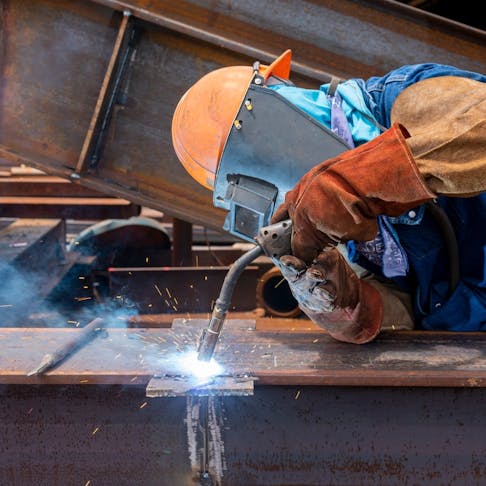Welding WPS Explained: Trick Elements and Conveniences for Your Welding Procedures
Welding WPS Explained: Trick Elements and Conveniences for Your Welding Procedures
Blog Article
Mastering Welding WPS Standards: Best Practices and Techniques for Top Quality Welds
In the realm of welding, mastering Welding Treatment Specification (WPS) requirements is an important component that directly affects the high quality and honesty of welds. Abiding by these standards makes certain consistency and dependability in welding end results. However, achieving excellence in welds surpasses just understanding the criteria; it entails executing ideal methods and strategies that elevate the craft to a level of accuracy and skill that establishes apart the standard from the remarkable. As we browse through the complexities of welding WPS criteria, revealing essential understandings and methods for achieving top-tier welds will certainly be vital for welders looking for to stand out in their craft and produce welds that stand the examination of time.
Comprehending Welding WPS Standards

Assessors rely on WPS documentation to verify that welding treatments are being adhered to properly and that the resulting welds are of high top quality. Designers use WPS standards to design welding treatments that guarantee the longevity and integrity of bonded structures.


Necessary Devices for Quality Welds
Understanding welding WPS standards is essential for welders to successfully utilize the important devices required for creating quality welds. The kind of welding device needed depends on the welding procedure being utilized, such as MIG, TIG, or stick welding. Cable brushes and breaking hammers are vital for cleaning the weld joint prior to and after welding to get rid of any type of pollutants that could influence the quality of the weld.
Secret Methods for Welding Success
To attain welding success, one need to master the essential techniques important for producing high-quality the original source welds. Maintaining a steady welding and a consistent hand placement throughout the process is crucial to achieving accuracy and consistency in the welds. By grasping these essential methods, welders can boost the high quality of their work and attain welding success.
Ensuring Conformity With WPS Standards

In addition, welders must go through training to familiarize themselves with the WPS standards pertinent to their job. Regular audits and assessments must be performed to validate that welding activities line up with the prescribed WPS standards. Furthermore, maintaining thorough documents of welding parameters, tools calibration, and examination results is critical for demonstrating compliance with WPS standards - welding WPS. By carefully adhering to WPS criteria, welders can guarantee that their job fulfills the required quality levels and adds to the general success of the welding task.
Troubleshooting Common Welding Issues
When confronted with common welding problems, recognizing the root cause is critical for effective troubleshooting. One prevalent trouble is the existence of porosity in welds, usually caused by contaminants such as wetness, oil, or rust. To address this, guaranteeing correct cleaning of the base metal prior to welding and making use of the correct securing gas can considerably decrease porosity. An check my reference additional problem frequently encountered is lack of blend, where the weld fails to properly bond with the base material. This can come from poor warmth input or incorrect welding strategy. Changing specifications such as voltage, cable feed rate, or take a trip speed can assist improve fusion. Additionally, distortion, breaking, and spatter prevail welding difficulties that can be alleviated with appropriate joint preparation, constant warmth control, and picking the ideal welding consumables. By extensively comprehending these usual welding problems and their origin, welders can properly troubleshoot issues and achieve premium welds.
Conclusion
Finally, mastering welding WPS standards requires an extensive understanding of the standards, utilizing essential devices, and carrying out crucial techniques for effective welds. Making sure conformity with WPS requirements is important for creating top quality welds and preventing usual welding concerns. By complying with ideal methods and practices, welders can attain trustworthy and regular lead to their welding tasks.
In the realm of welding, grasping Welding Procedure Specification (WPS) criteria is a crucial part that directly influences the high quality and integrity of welds.When delving into the world of welding practices, an important aspect to comprehend is the value and complexities of Welding Treatment Specification (WPS) standards. WPS criteria offer an in-depth guideline this post for welding procedures, ensuring consistency, high quality, and security in the welding process. The type of welding device required depends on the welding procedure being made use of, such as MIG, TIG, or stick welding.Accomplishing welding success via the mastery of essential methods necessitates a detailed understanding and adherence to Welding Procedure Specification (WPS) standards.
Report this page